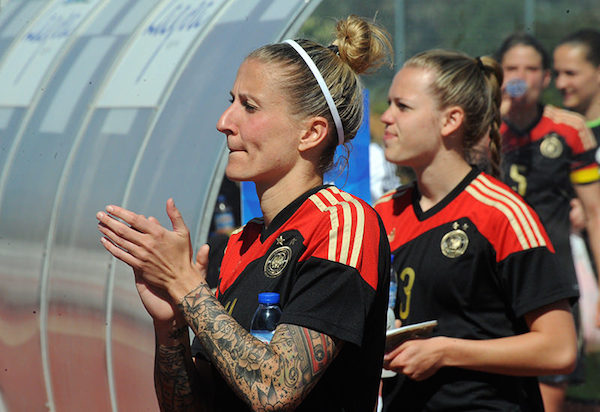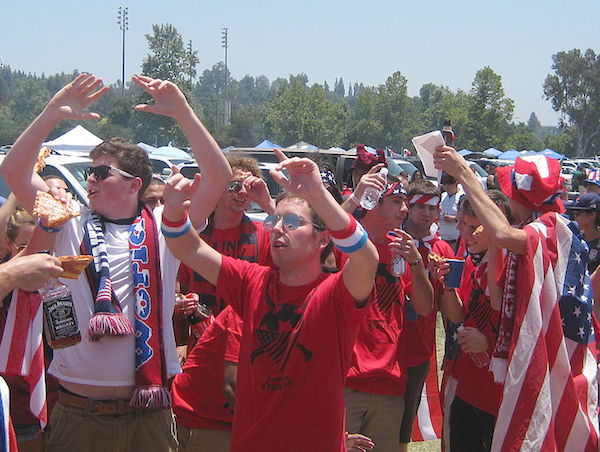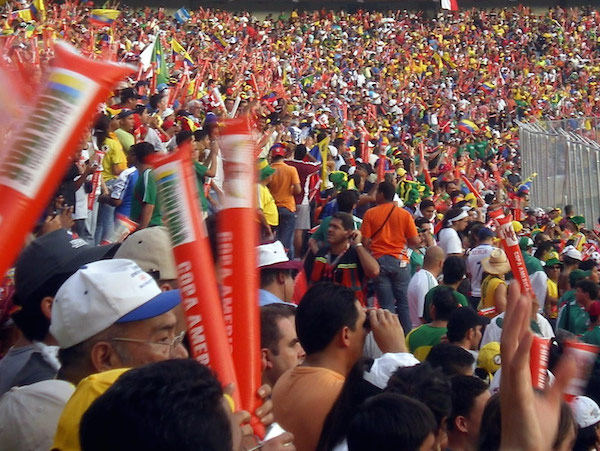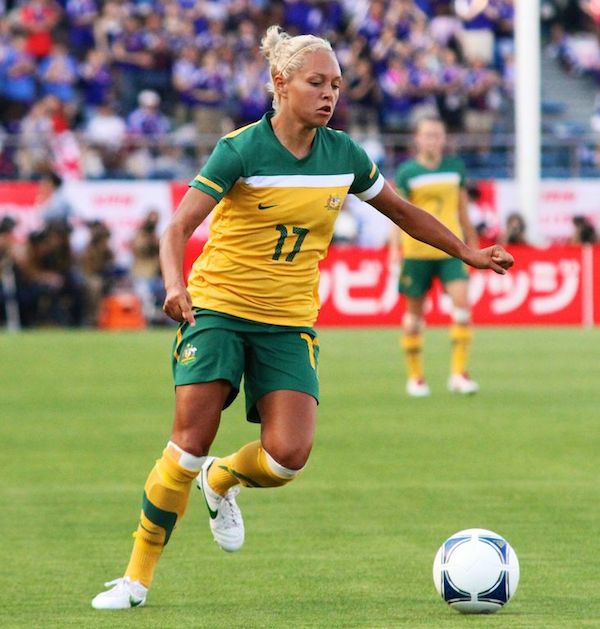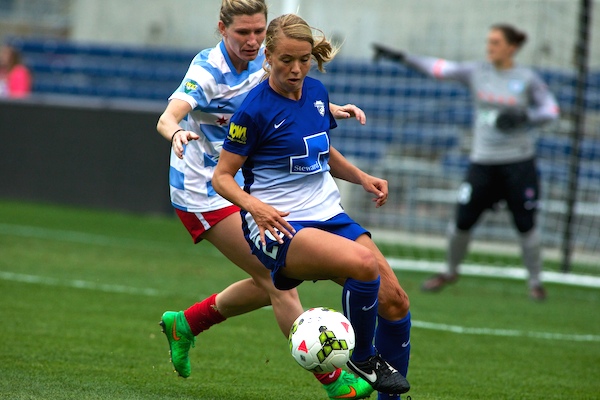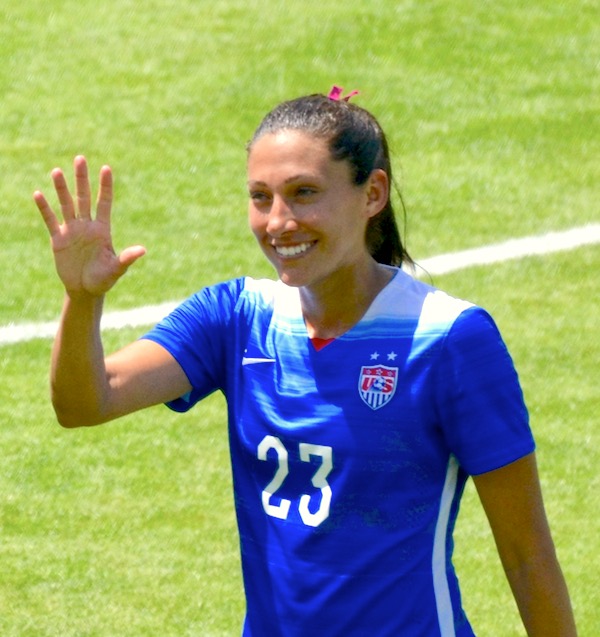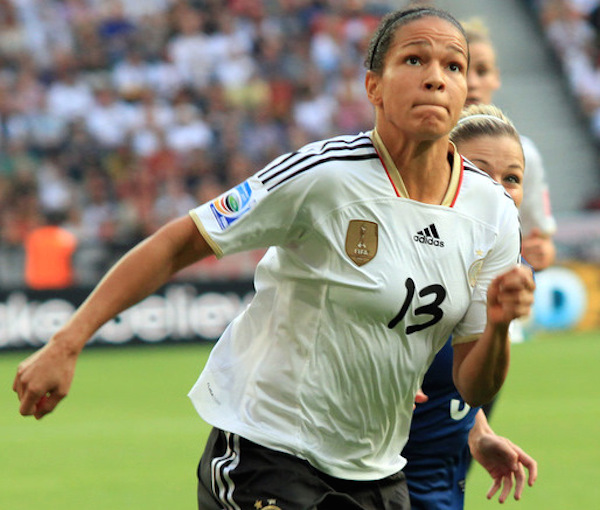Tuesday night at 7 p.m. ET, the United States women’s national soccer team will play against Germany in the semifinals of the World Cup. The game will be televised on Fox but I will not be watching. I’ll be at the game, wearing a U.S. jersey and screaming a lot. I am about as excited and nervous and full of dread as I can remember being the night before a sporting event. To prepare for the event, I’ve written a lot about the game. In this post, I hem and haw about our opponent: Germany. I also previewed the game’s plot and characters and wrote about why I won’t be joining in with the “I believe that we will win” chant.
Why Germany?
Why does it have to be Germany? Seriously — why? I have an abject fear of Germany as a soccer power. It seems like every time the U.S. team, men’s or women’s, gets in position to do something wonderful at a World Cup, the Germans come through and ruin it for us. Over the past twenty years, I’ve developed as thorough a sports-hatred for Germany as I have for anyone short of the Philadelphia Flyers. I can quickly, without looking too much up, rattle off my litany of complaints:
- 1990 — the first World Cup the men’s team had qualified for in more than 44 years. My introduction to international soccer as a fan. Sure, the U.S. didn’t play Germany but the German team won. Strike one.
- 1998 — after the thrilling soccer awakening of hosting the 1994 men’s World Cup and getting to see three games in person (including an amazing quarterfinal upset of Germany by Bulgaria!!) the United States team gets stuck in a group with Germany. Germany slams the U.S. team 2-0 in the first game of the tournament and the U.S. never recovers. Three straight losses and home.
- 2002 — the men’s team once again escapes the group stage and, after a miraculous 2-0 win over Mexico, advances to the quarterfinals… only to run into Germany. 2-0. Germany moves on, the U.S. goes home again.
- 2003 — Although I have vague memories of the U.S. women’s team throughout the 1990s, their World Cup victory in 1999 seared them into my (and everyone else’s) consciousness. So, it was no surprise that we all paid more attention to the the next (this) women’s World Cup. I’m in college, so I have nothing better to do than geek out and watch all the games. After an easy run through the Group stage and Quarterfinals, the U.S. team smacks up against Germany in the semifinals. They get smacked, 3-0. The Germans go on to win the tournament, their first.
- 2014 — the men’s team is stuck in a group with Germany again. Despite that, they could have, should have, would have won the group except for a last second goal by Portugal’s Ronaldo which forced the U.S. to need a win going into the last Group Stage game… against Germany. No dice. The Germans sucked the air out of the ball and won, 1-0, setting the U.S. up for a tough and eventually futile effort against Belgium in the Round of 16.
Looking back on this, it seems like the double-whammy of 2002 and 2003 must have been the moment when my fear and dislike for German soccer teams was cemented once and for all. It probably doesn’t hurt that half of my partner’s family lives in the Netherlands, what with their long, storied, and tragic history of losing to the Germans in World Cups. Neither the United States men’s team or a Dutch team of any gender is playing tomorrow, so their history’s don’t matter outside of my own brain. To confirm or dispel my fears about tomorrow, I did a little research about just the United States women’s team and how well they’ve done against the Germans.
It’s actually a much rosier picture than my tortured mind imagined. In 29 games between the two teams, the United States has won 18, lost four, and tied seven. In World Cups, things are a little more even but still slanted towards the United States. The two teams have played three times in World Cups, in the 1991 semifinals, which the United States won 5-2, in the 1999 quarterfinals, which the United States won 3-2, and in the 2003 semifinals, which Germany won 3-0. Since that loss in 2003, the United States has won six, tied five, and lost zero games against Germany.
It may be irrational, because all sports games are played in the present, but this new way of looking at the past makes me feel better. I’m more confident that, even if we do lose, it won’t be because of some age-old trend of the Germans always beating the U.S. soccer teams and ruining my year.

